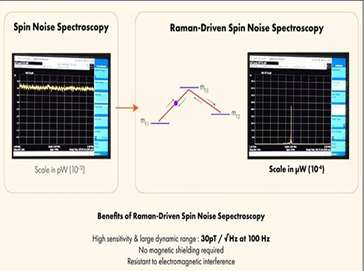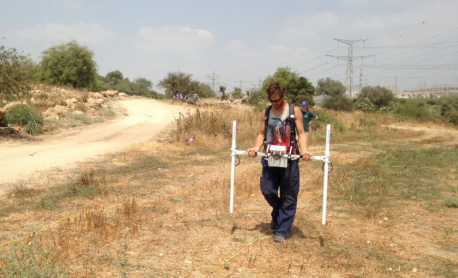Syllabus: GS3: Achievements of Indians in Science & Technology; Indigenization of Technology and Developing New Technology.
Context:
Researchers have developed a new technology to measure magnetic fields from brain activity to deep space withoutrelyingonbulky shielding or ultra-quiet laboratories.
More on the News
- Researchers at the Raman Research Institute (RRI) have devised a novel method for magnetometry in an all-optical quantum magnetometer that could address these challenges.
Magnetometry:

- It is the science of measuring magnetic fields, often used in geology, archaeology, and space research.
- Based on Raman-Driven Spin Noise Spectroscopy (RDSNS), this method could transform the way we measure magnetic fields, making the process faster, portable, and precise even in noisy, real-world environments.
- Researchers have created a new tool to measure magnetic fields, from the brain to outer space, without heavy shielding or silent labs.
Magnetometer
- A magnetometer is a device that measures the strength and direction of a magnetic field.
- It has various applications, from navigation and metal detection to geophysical surveys and medical imaging.
- The most promising methods for magnetic field measurement are based on detecting polarization rotation of a probe light passing through alkali atoms in a very weak magnetic field.
- Magnetometers based on this method, referred to as Optically pumped atomic magnetometers (OPAMs) and Spin Exchange Relaxation Free (SERF) magnetometers, typically have high sensitivity but demand sophisticated magnetic shielding and have a lower dynamic range. These requirements make them difficult to be used in real life.
Raman-Driven Spin Noise Spectroscopy (RDSNS)
- Researchers at Raman Research Institute (RRI) developed a new all-optical quantum magnetometer using Raman-Driven Spin Noise Spectroscopy (RDSNS).
- This method tracks tiny quantum fluctuations (spin noise) in rubidium atoms when exposed to a magnetic field.
- By analyzing laser light reflecting off these atoms, they can measure magnetic fields quickly, precisely, and even in noisy environments.
- When exposed to a magnetic field, the pattern of this spin noise shifts in predictable ways.
- By shining lasers and analyzing the noise, researchers can accurately measure the magnetic field without touching or disturbing the atoms.
- Most magnetometers have to choose between sensitivity and large dynamic ranges two. But RDSNS works beautifully across a wide range of field strengths—from very weak to very strong—without sacrificing precision.
- This setup works without magnetic shielding thus making it viable to be used in outdoor, industrial and clinical environments where other magnetometers fail.
- The method could revolutionize how we scan the brain and nervous system—offering an alternative to MRI that is silent, compact, and non-invasive.
- Prospectors could use these sensors to detect underground magnetic variations hinting at mineral deposits.
- In space, where weight and robustness matter, a portable, shield-free magnetometer is invaluable for studying magnetic fields around planets and stars.
Raman Research Institute (RRI)
- The Raman Research Institute was founded in 1948 by the Indian physicist and Nobel Laureate, Sir C V Raman, to continue his studies and basic research after he retired from the Indian Institute of Science.
- It is now an autonomous research institute engaged in research in basic sciences.
- It receives funds from the Department of Science and Technology of the Government of India.
- The main areas of research at the Institute are Astronomy & Astrophysics, Light & Matter Physics, Soft Condensed Matter, and Theoretical Physics.

